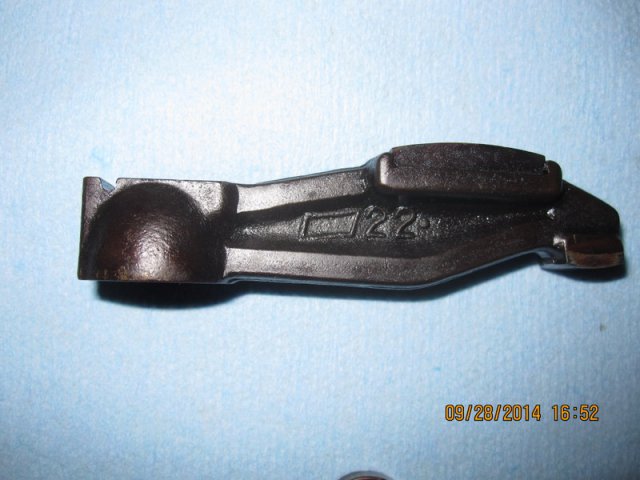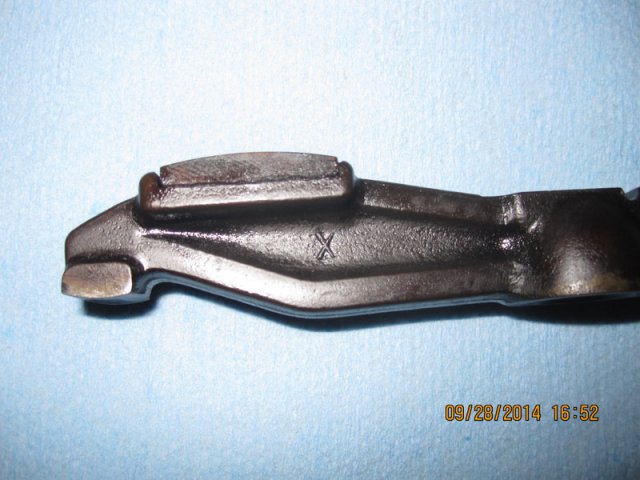
NewZed
Members-
Posts
6700 -
Joined
-
Last visited
-
Days Won
72
Content Type
Profiles
Forums
Blogs
Events
Gallery
Downloads
Store
Everything posted by NewZed
-
Using an N42 intake and a 60mm 240 TB on an '83 280ZX? Need some help?
NewZed replied to Mirage775's topic in Nissan L6 Forum
If you're going to leave the valve cover breather open to atmosphere, you don't want to connect the crankcase hose to the intake. The valve/rocker arm cover cavity is connected to the crankcase. The Pallnet rail will just have an extra port to supply fuel to the CSV. lol -
Been on for a little while and no problems at all. Just one data point, for reference.
-
Clearance questions. LD intake on gas engine.
NewZed replied to tyler031734's topic in Nissan L6 Forum
Don't you really need just a head? Here's a recent thread on the same. http://forums.hybridz.org/topic/116474-ld28-intake-input/ -
Car dies wont start ! little help here please
NewZed replied to datASSun's topic in Gen III & IV Chevy V8Z Tech Board
Metal. I would make one of those spinning wheels, like on Wheel of Fortune or The Price is Right, and fill the slots with random things like fuel pump , fuel filter, PCM, grounds, carpet stuck under the gas pedal, etc. Spin and go. Spin, spin, spin... -
You put 5 quarts in, on a 4 3/4 quart spec. And finding the source of "smoke" is a very basic skill for a competent mechanic. Check those hose clamps.
-
How long did the smoke last? What did it smell like? If you went out and drove it now would it do the same? How can you see smoke from the exhaust manifold if you're driving and the hood is closed? By "exhaust manifold" do you really mean exhaust pipe (the hole in the back)? Did you do any other work besides the fuel pump and oil change? You're either making something big out of not much, or you broke something when you were working on it.
-
Car dies wont start ! little help here please
NewZed replied to datASSun's topic in Gen III & IV Chevy V8Z Tech Board
This method just does not work with any of the EFI systems. You have to know the numbers. If you're running stock engine management you should have OBD and a code. You should learn how to diagnose your EMS before things get way out of hand. Stomping the gas to fix the problem doesn't work. You're on a bad path. -
Car dies wont start ! little help here please
NewZed replied to datASSun's topic in Gen III & IV Chevy V8Z Tech Board
Describe your engine management system. Better details on the problem will help you also. Stomp, surge, bog, are pretty vague. Descriptions of when it runs right are good also. -
Pretty sure i just read a thread from an Australian forum about carbed L28's with N42 heads used in the S130 body. There's a reference to the head also in the L6 Heads FAQ. Maybe they used a B cam for carb'ed L28's. I've wondered why the atlanticz cam spec. compilation (is that what you meant by the "book", or is there actually a book out there with cam letter designations?) skips the B. Tony D probably has details. http://forums.hybridz.org/forum/90-l-series/
-
5.3L 280z thinks its a Supra - Fuel Cut issues. HELP!
NewZed replied to datASSun's topic in Gen III & IV Chevy V8Z Tech Board
It's just math. Here's some Google - http://www.onallcylinders.com/2013/05/16/what-size-fuel-pump-do-i-need-your-top-tech-questions-answered/ The typical auto store replacement pumps, like the Airtex E8312, are rated to 75-90 psi, 30 gph. He might have one on his car already. Crazy. -
Kameari rocker arms. The specs are interesting, down at the bottom. Spendy. http://www.rhdjapan.com/kameari-l-type-rocker-arms-set-l6.html
-
5.3L 280z thinks its a Supra - Fuel Cut issues. HELP!
NewZed replied to datASSun's topic in Gen III & IV Chevy V8Z Tech Board
You could do some math - http://www.fuel-pumps.net/fuelpumpsfaq41.html - then check specs. Of course, it doesn't look like you've confirmed that you need a new fuel pump. But you'll find out after you replace it. The pump doesn't know how much horsepower you're making, it just sits and spins, so no reason for it to wear out any faster with 10,000 HP than 10. If it worked for two months, it was sufficient. -
Collecting a few more threads - http://www.classiczcars.com/forums/help-me/50052-cam-wear.html http://forums.hybridz.org/topic/111062-leons-other-260z/page-12?do=findComment&comment=1122024 later in the thread, #232 and earlier. http://forums.hybridz.org/topic/118926-engine-woes-read-on-if-you-dare/page-2?do=findComment&comment=1122036
-
Here's a recent thread with the similar comments about new aftermarket versus reground versus used rocker arms, from Schneider instead of Isky. Post #25. http://www.classiczcars.com/forums/help-me/50052-cam-wear.html
-
Engine woes- read on if you dare
NewZed replied to madkaw's topic in Trouble Shooting / General Engine
I'm pretty sure that these are original 1976 rocker arms, pictures. From my old cylinder head, off an engine which appeared to all original. Either 150k or 250k miles. And here's a link with a few pictures of the ITM rocker arms. The used ones are different and the ones he replaced have a Z, instead of an X. No idea if that's relevant. http://forums.hybridz.org/topic/106910-loud-tickingknocking-noise/ -
Engine woes- read on if you dare
NewZed replied to madkaw's topic in Trouble Shooting / General Engine
Leon just relayed a conversation he had with Isky about rocker arms. He said that new or mildly worn used was the way to go. Now you report that new Nissan rocker arms were "bad rockers". Any chance that they weren't actually new Nissan? What will you be checking on the rocker arms? Looks like a quagmire. Post #232 - http://forums.hybridz.org/topic/111062-leons-other-260z/page-12?do=findComment&comment=1122005 -
Engine woes- read on if you dare
NewZed replied to madkaw's topic in Trouble Shooting / General Engine
How does a bad rocker affect a valve and guide? Side loading? How would that happen? Just wondering. And did Delta do the first regrind on the rocker arms? I thought that they had issues? My impression on carbon buildup was that it comes mostly from combustion gases and fuel mix flowing over the back of the intake valve at certain times during engine operation. For example, when the throttle is closed the piston can exert a vacuum but there's no air to be pulled in. Flow stops, gases back-flow, condensation on the cold valve occurs. Same reason crud gets in the intake runners and all the way up to the throttle body. Not so much what's coming down the intake runner. No idea how to stop, except spend more time with the throttle open. -
There are threads out there. Late 90's I believe, but I would find a thread and confirm first. Just search "Kia sportage 240z weatherstrip" and something will pop up.
-
Trying to Decide Which Route to Take on my 260z Rear End
NewZed replied to BluSkyLightning's topic in Drivetrain
Looks like an open R180. The wallowed out hole for the spider gear shaft is apparently what happens when you spin one wheel. Not good. Check the numbers stamped on the ring gear to see what ratio you have so you'll know what to expect from a replacement. If you go to an R200 you'll need more parts than just the diff. And thanks for playing some decent music... -
Makes sense. You could probably fit narrow springs to the stock struts though, for the same purpose. The path to adjustable coilovers didn't follow from the problem.
- 19 replies
-
- AMC V8 swap
- v8
-
(and 1 more)
Tagged with:
-
Do you think that the spring perches will leave more room for the wheels if they're adjustable? Have you thought this through?
- 19 replies
-
- AMC V8 swap
- v8
-
(and 1 more)
Tagged with:
-
Get the Kia Sportage weatherstrip. The repro stuff tends to be too thick, according to numerous reports around the web.
-
You can't learn this stuff from a phone. You'll need a big screen and time to read. http://forums.hybridz.org/topic/50208-the-ultimate-l28et-guidewhat-you-need-for-350whp/ http://forums.hybridz.org/topic/38461-240z-260z-280z-turbo-swap-guide/ https://www.diyautotune.com/tech_articles/how_to_megasquirt_your_280zx_turbo.htm
-
There's a guy who recently snapped the tensioner head right off of the shaft. It was extended and cocked when he put the chain back. He had the same problem getting the sprocket back on as you. Pretty sure that if you get your eye just right or use a mirror that you can see the tensioner, with the valve cover off. If you see a lot of the shaft you might have a problem. You might try rotating the engine backward, but it could be too late. The half mm extra in HG isn't going to matter.


